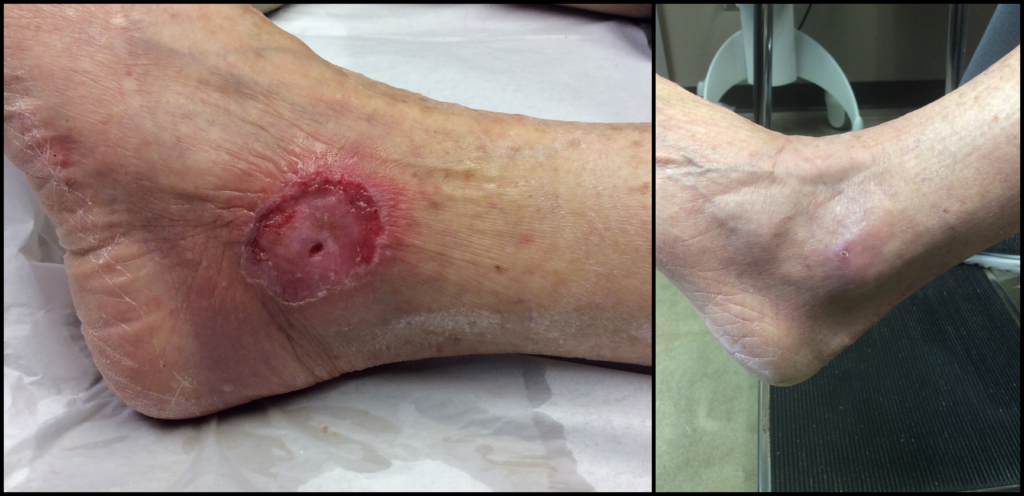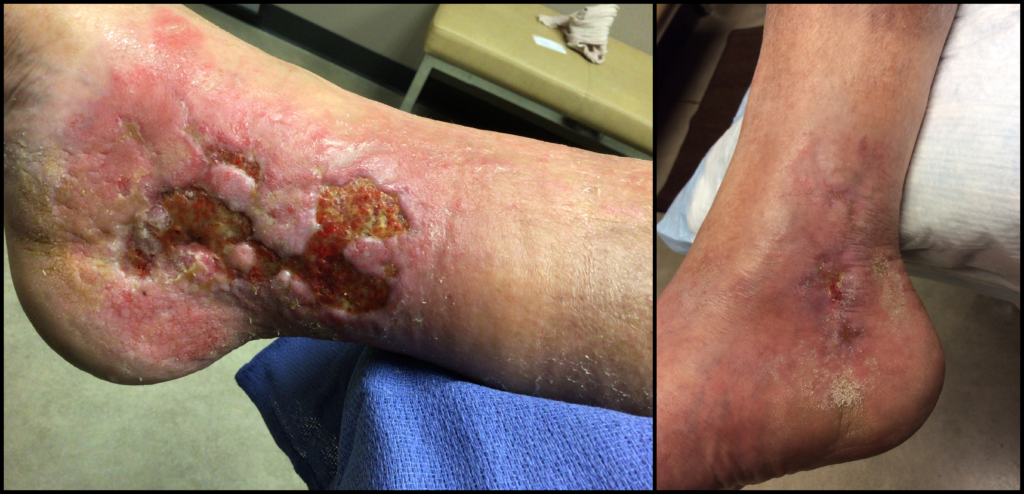A venous ulcer, also called a leg ulcer, is a chronic, slow-to-heal wound on the leg or foot. Leg ulcers typically appear near the ankle or on the lower calf and are caused by poor circulation and weakened veins. When the veins fail to pump blood back to the heart properly, the blood accumulates in the lower extremities, causing the tissue around the vein to break down. The primary concern is lowering venous pressure back to normal, which can be achieved through one of the vein treatments available at the Vein Care Center.
Other methods of treatment may also include wound care at the Vein Care Center. These appointments include cleaning, debriding, dressing the wound, and applying compression bandages. Medications may need to be prescribed to aid in the healing process, including antibiotics if the leg ulcer is infected.
EPIFIX is a dehydrated human amnion/chorion membrane allograft. EPIFIX sheets provide a semi-permeable protective barrier that supports the healing cascade and protects the wound bed to aid in the development of granulation tissue in acute and chronic closures. EPIFIX provides a biocompatible human extracellular matrix and retains 300+ regulatory proteins to aid in wound healing.


Excellent care before, during and aftercare. Dr. Aggarwal went beyond the procedure, she sought the cause of the problem.
Kathleen H.“I wish you opened at 7 am. I love that I have never had to wait a long time to be seen when I am there for my appointment! Wonderful staff!”
Karen P.“I was very satisfied as a patient at the vein care center. Facility and staff exceptional. Thank you to all!”
Lauren Z.“I have been very pleased with the treatments I have received. My legs are looking much better, thanks.”
Teri R.“I highly value and highly recommend the care and treatment at vein care center and appreciate the friendliness of all staff and providers!”
Friendliness“Extremely prompt on all appointment times. Everyone was very friendly and courteous at all time.”
Prompt” I have had numerous procedures on my veins and this by far exceeds all-rick and dr. Aggarwal are so knowledgeable and so professional. I had no pain and minimal bruising. I am amazed at this facility!”
Lynne A.“A month after the procedure, my leg is healing well. No more swelling, no more leg pain”
Lorie B.“I would recommend your facility to anyone. You’re caring and concern was wonderful.”
Sueann I.“Very friendly and informative. Nice, clean building.”
Paula B.